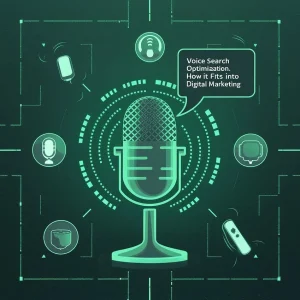How Augmented Reality (AR) and Virtual Reality (VR) Are Transforming Digital Marketing in 2024
In 2024, Augmented Reality (AR) and Virtual Reality (VR) are transforming the world of digital marketing. These immersive technologies are enabling businesses to connect with customers in innovative ways and provide distinctive experiences. Let’s explore how AR and VR are reshaping the digital marketing landscape this year.

1. Enhanced Customer Experiences
Meaning: Augmented Reality (AR) and Virtual Reality (VR) offer engaging and immersive experiences that draw users in. These innovations can enhance online shopping by enabling shoppers to virtually test products prior to making a purchase. For instance, a furniture retailer could employ AR technology to show customers how a new sofa would appear in their living space using their smartphone camera, thereby aiding them in making more assured buying choices.
Example: Picture yourself browsing online for sports equipment. AI can suggest items based on your past searches and purchases, enhancing your shopping experience to be more customized and enjoyable.
2. Virtual Try-Ons and Demos
What It Means: Virtual reality (VR) enables customers to try on clothing, accessories, or makeup in a virtual environment. This technology provides the opportunity to visualize how these products appear on them without the need for physical fitting.
Example: A cosmetics brand could implement VR to allow users to experiment with various makeup styles using a virtual mirror, enhancing the personalization and enjoyment of the shopping experience.
3. Interactive Product Showcases
What This Means: Interactive components that draw in attention and pique interest can be included in commercials to make them more engaging using AR and VR.
Example: Using augmented reality (AR), a vehicle manufacturer may utilize a billboard advertisement to let people scan it with their phones and experience a 360-degree preview of a new type of automobile.
4. Immersive Brand Experiences
What It Means: Virtual reality (VR) has the ability to take people to virtual worlds where they can engage with brands in novel ways. This produces unique experiences that strengthen consumer loyalty to a company. As an illustration, a travel company may use virtual reality (VR) to offer virtual tours of popular holiday spots, giving prospective clients a preview of what to expect and encouraging them to make travel plans.
5. Engaging Advertising Campaigns
What It Means: AR and VR can make advertisements more engaging by providing interactive elements that capture attention and drive interest.
Example: A car manufacturer might use AR in a billboard ad to allow passersby to scan the ad with their phones and explore a 360-degree view of a new car model.
6. Virtual Events and Trade Shows
What It Means: VR can host virtual events and trade shows, allowing users to attend and interact with brands from anywhere in the world.
Example: A tech company might hold a virtual product launch event where attendees can explore new products, attend live presentations, and interact with other participants—all from their own homes.
In 2024, Augmented Reality (AR) and Virtual Reality (VR) are revolutionizing digital marketing through the introduction of immersive, interactive experiences. These technologies enable businesses to offer virtual try-ons, product demonstrations, captivating advertisements, and virtual events, fostering closer connections with their audiences and improving marketing approaches. By leveraging AR and VR, brands can deliver unique and unforgettable experiences that distinguish them in a crowded marketplace.
Hungry for more insights? Read more on my latest blog post and discover expert tips from a Digital Marketing Strategist in Kasaragod!


